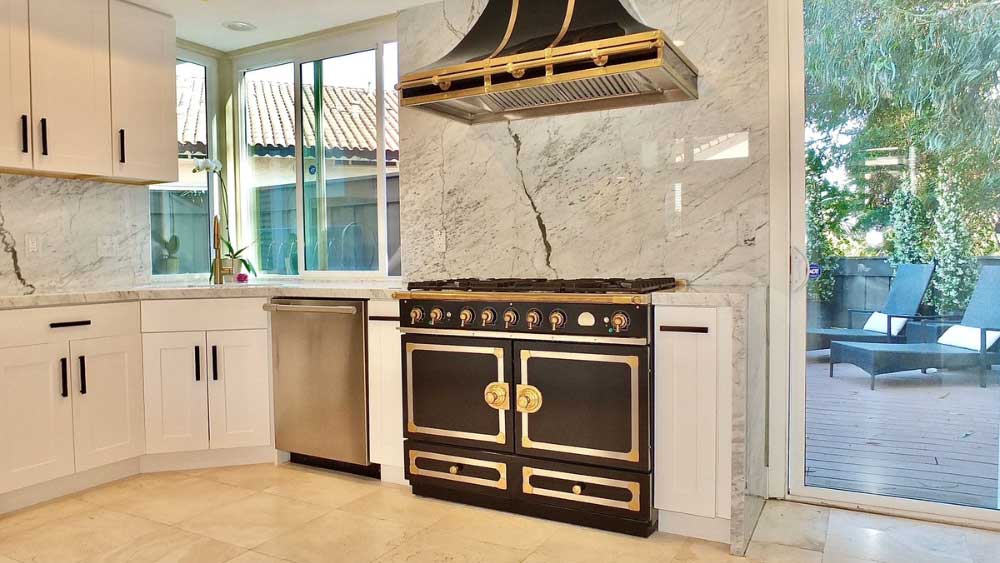If you’ve ever wondered how high to hang your range hood, you’re not alone; even designers and contractors miss this one.
Get it wrong, and you’ll be breathing in last night’s fish along with a mix of harmful compounds, all while wondering why the hood you spent good money on isn’t doing its job.
In the next few minutes, you’ll know exactly how high to hang any style of range hood, and why that height matters for both performance and indoor air quality.
We’ll outline the ideal mounting heights for range hoods over gas, electric, and induction cooktops.
Next, we’ll walk through the key variables that can shift those numbers.
Finally, we’ll wrap up with an installation checklist that prevents the most common (and costly) callbacks.
Quick-Reference: Use the chart below to find your hood’s ideal mounting height, then keep reading to learn why these numbers work.
Range Hood Height Cheat Sheet
| |
Recommended Height Above Cooktop |
| Gas ranges |
24-30 inches |
| Electric or induction |
28-36 inches |
| Pro-style hoods |
30-36 inches (30-40 for custom wood) |
| Under-cabinet hoods (standard) |
18-24 inches |
| Island hoods |
30-36 inches |
| Ceiling blowers |
4-7 feet (but effectiveness is limited) |
💡Pro Tip: Taller cooks can go slightly higher for comfort, but too high and the hood won’t catch smoke or grease.
Even the pros miss this one. One top designer had her kitchen splashed across Café’s website, but the hood sat so high it was basically décor.
Beautiful kitchen, useless vent. Hopefully she’s eating out.
Let’s make sure yours actually works.
📌Skip Ahead:
Looking for answers about Ventilation?
Short on time? Download our free Ventilation Buying Guide.
Why Hood Height Matters
The height of your hood isn’t just about looks.
Hang it too high, and smoke and grease will drift right past it. Hang it too low, and you’ll block your view, or worse, hit your forehead.
- Too high ➡️ smoke and grease escape
- Too low ➡️ blocked view & potential head bumps
But there’s a bigger issue here: air quality.
Modern gas burners and pro ranges produce far more heat than they did 20 years ago.
Along with the steam from your pasta, you release a cocktail of carbon monoxide, nitrogen dioxide, formaldehyde, and other particulates into your kitchen.

Pair that with today’s airtight homes, and those byproducts don’t simply waft away; they stay in your house, coating your cabinets, your ceiling, and your lungs.
The right hood height is the first step to catching all of that before it escapes.
Factors That Affect Hood Height
There’s no one-size-fits-all number for hood height. A few key factors determine how high yours should hang:
Cooking Surface Type

Gas runs hotter → mount lower. Gas ranges spew more smoke and grease, so their hoods sit closer; electric and induction can be higher.
Ceiling Height
Standard 8 ft vs. vaulted ceilings. Eight-foot rooms stay in the 24–36 in. zone; tall ceilings may need chimney extensions or a different vent plan.
Hood Type
Pro, island, under-cabinet each have a sweet spot. A heavy pro hood over a 36-inch Wolf range will hang higher than a slim under-cabinet hood over a simple electric stove.
How You Cook

High-heat chefs mount lower. Stir-fry, grill, or fry nightly? Keep the hood closer. Boil pasta and reheat leftovers? A bit more clearance is fine.
Personal Comfort
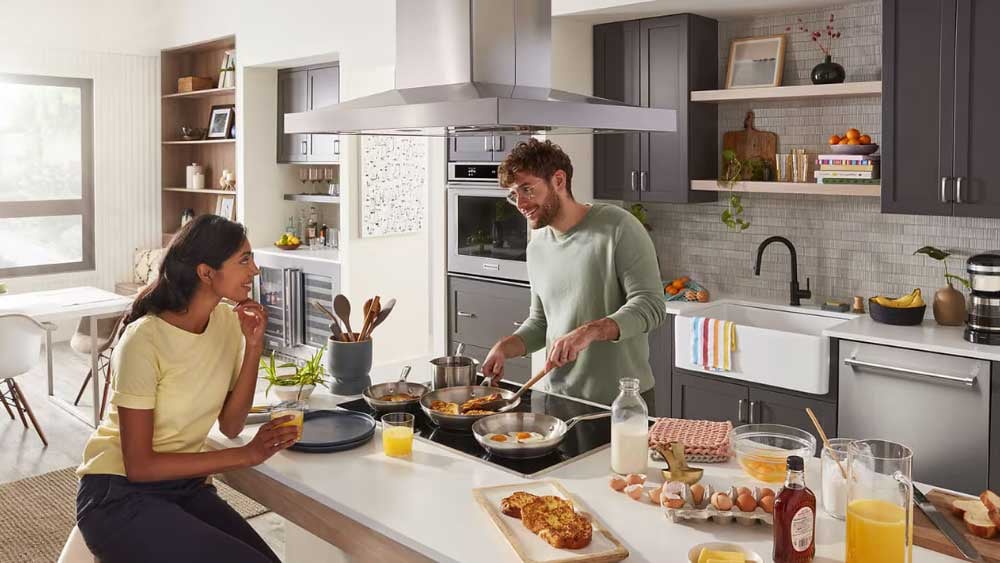
Your height matters. Taller cooks raise the hood to avoid head bumps; shorter cooks keep it lower to see the controls.
Recommended Heights by Hood Type
Gas Stovetops
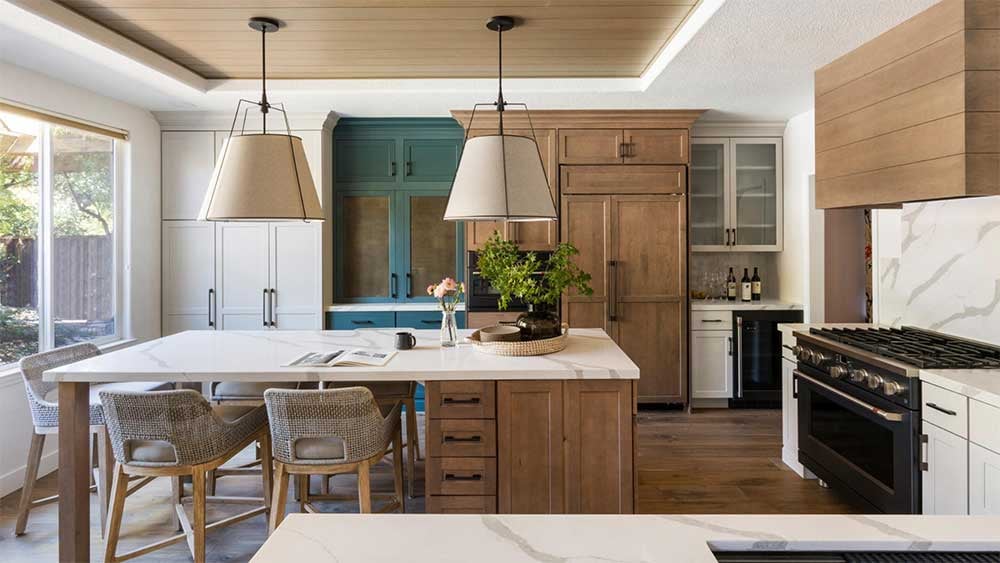
Mount your hood 24–30 inches above the cooking surface for best performance. For powerful professional ranges, increase that slightly to 30–36 inches.
Electric & Induction Stovetops
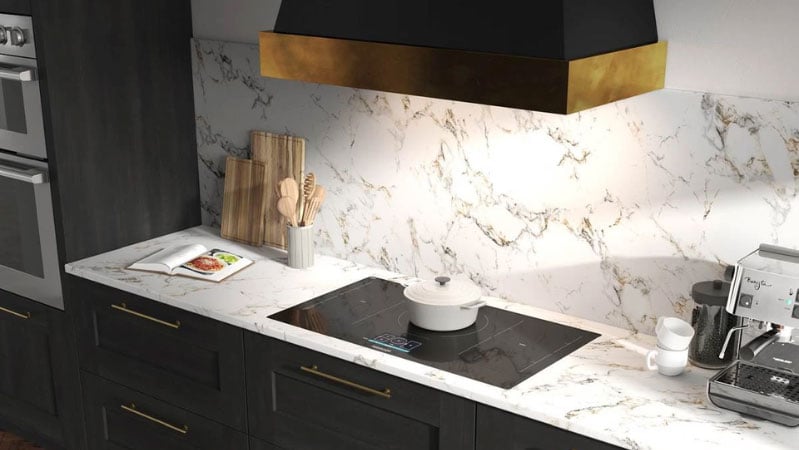
Electric and induction stovetops run cooler and produce less smoke, so you can go a bit higher: 28–36 inches above the cooktop without losing efficiency.
Under-Cabinet Hoods
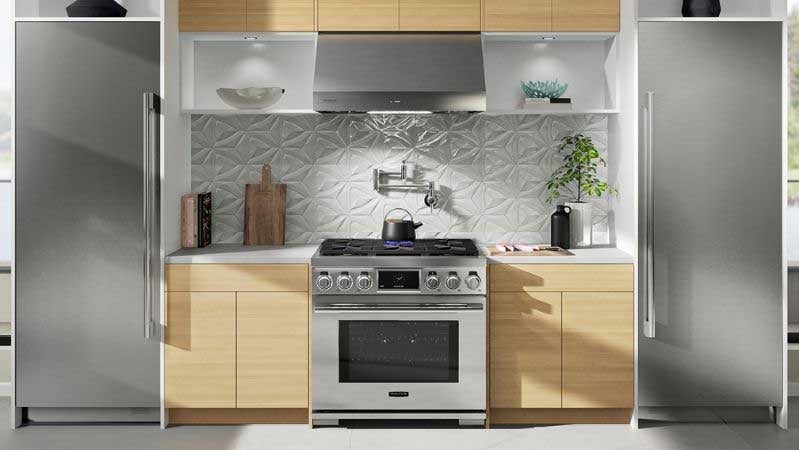
For a standard range, aim for 18–24 inches above the surface. For a pro-style range, 30–36 inches provides more clearance and captures more smoke.
Island Hoods

Without walls to trap smoke, island hoods need to sit a little closer.
Thirty to 36 inches is ideal, and always oversize the hood by at least six inches wider than the cooking surface for better capture.
Ceiling Blowers
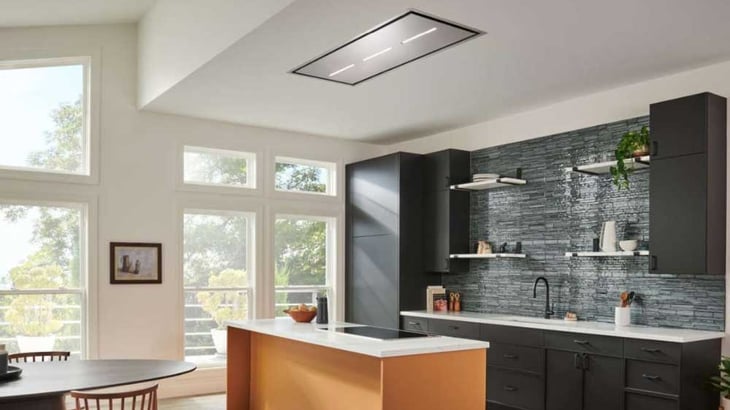
Ceiling blowers look sleek in magazines, but they’re often too far away to work.
They must be installed four to seven feet above the cooktop; by the time smoke gets there, it has already drifted away.
💡 Pro Tip for Boston Brownstones:
For homes with low ceiling clearances (think South End or Beacon Hill), AGA is the only hood brand that can be customized by height.
Every other hood brand forces you to work around their specs; AGA works around you. Keep in mind that flexibility comes at a premium price.
💡 Pro Tip for Homes With Tall Ceilings:
Skip the ceiling blower; it rarely captures smoke effectively. Instead, use a properly sized island hood, or better yet, if the layout allows, place the hood against a wall for even better performance.
Ventilation Basics (CFM, Capture, and Ducting)
Getting the height right is half the job; the other half is making sure your hood can actually move the air.
CFM (Cubic Feet per Minute)

This measures how much air your hood can pull each minute. More CFM means more smoke and grease removed.
Range Hood Ventilation: By the Numbers
- 33,194 – Yale Appliance service calls completed last year.
- 9.5% – Average first‑year service rate for all appliances we sell.
- 4% – First‑year service rate for ventilation products (because if you size and hang it right, it just works).
- 30 feet – Maximum recommended duct length (shorter is always better).
- 400 CFM – The point where the Massachusetts code requires make‑up air.
- 23 inches – Ideal hood depth to cover the front burners on a pro range.
Recommended CFM Cheat Sheet
| |
Recommended CFM |
| Boiling pasta, light simmering |
350-400 CFM |
| Standard gas cooking, frying |
600-900 CFM |
| Pro-style ranges, wok cooking, grilling |
900-1500+ CFM |
Pro Tip: Start your hood three to five minutes before you cook to get the air moving; don’t wait until the kitchen is smoky.
Capture Area
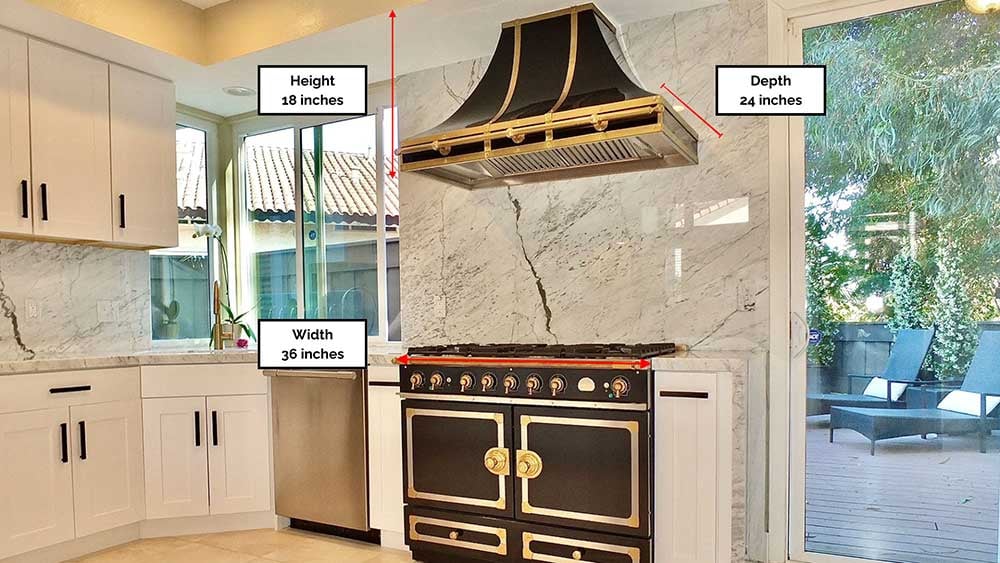
The hood’s shape and size matter. Depth is the most overlooked spec; a good pro hood should be at least 23 inches deep to cover the front burners, where you actually cook.
Ducting
Short, straight, and wide wins every time. Ducts should be no longer than 30 feet, and ideally you want to vent straight up or straight back.
Every elbow or turn in the duct adds resistance; think six to eight extra “feet” per turn.
Make-Up Air
In Massachusetts, any hood over 400 CFM requires make-up air—fresh air brought back into the house.
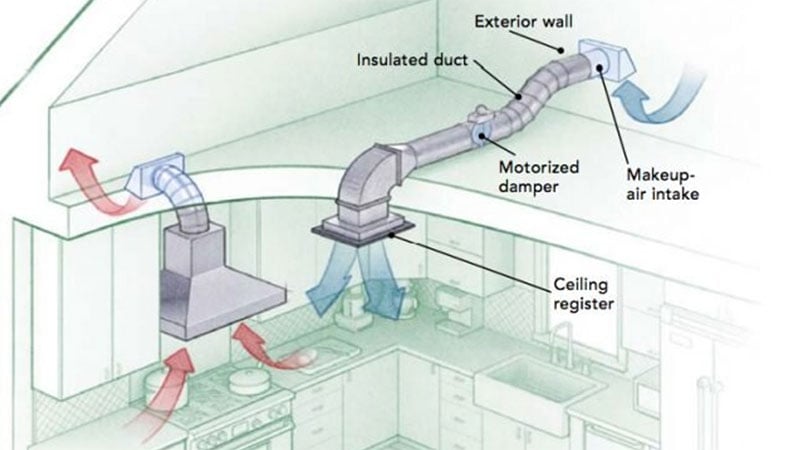
It’s easy to plan during new construction, but for retrofits, it has to be at least 10 feet away on the opposite wall.
🔍Read more: The Ultimate Guide to Proper Kitchen Ventilation
Range Hood Installation: One Checklist (with Pitfalls to Avoid)
- Measure and mark height. Use 24–30" for gas; 28–36" for electric/induction. Tape a level line.
- Find solid structure. Locate studs or add blocking; avoid drywall anchors.
- Plan the duct path. Short and straight wins. Vent up or back, minimize elbows, no flexible ducting.
- Right-size the duct. At least 6" for standard hoods; 8–10" for pro models.
- Account for make-up air. In Massachusetts, plan it if you’re over 400 CFM.
- Verify power. Confirm outlet or hard-wire at the install point.
- Do a dry fit. Check clearances for tall pots, backsplash, and your head.
- Mount securely. Fasten to studs/blocking and recheck level.
- Seal and test. Seal metal joints and run the fan to confirm capture.
Always follow the manufacturer’s templates and specs to protect performance and warranty.
Additional Resources
Get the Yale Ventilation Buying Guide with features, specs, and inside tips for every brand and hood type. Well over 1 million people have read a Yale Guide.
Related Articles:
Why Should You Trust Us?
It seems that every appliance review has nothing but glowing comments about almost every product, yet you read customer reviews and they are almost universally bad.
We are here to fill in the disconnect. We'll give you the best features, and the drawbacks as well, including reliability based on over 37,000 calls performed by our service team just last year. Our goal is to give you ALL the information so you know what's right for you.
Please consider subscribing or adding to the conversation in the comments below. We appreciate you stopping by.


